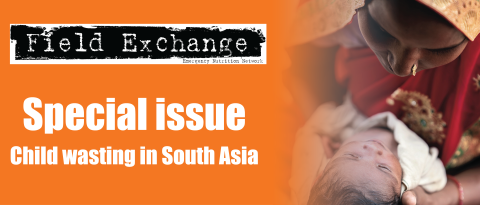Maternal profiles and social determinants of severe acute malnutrition among children under five years of age: A case-control study in Nepal
Research snapshot1
Malnutrition remains a major public health issue in Nepal and is estimated to be the underlying cause of 50% of child deaths. An estimated 10% of children under five years of age are wasted in Nepal and the prevalence of severe acute malnutrition (SAM) has increased considerably since 2001. Understanding the determinates of SAM in this context is important for finding effective ways to prevent cases. This recent study gathered data from general hospital admissions to identify maternal and social factors associated with SAM.
Using an unmatched case-control study design, admissions to the study hospital were screened and 256 children aged 6-59 months identified for inclusion. A total of 128 children were classified as SAM based on mid-upper arm circumference (MUAC)<115mm or oedema and 128 were classified as controls (MUAC>125mm). Any children with a chronic illness such as human immunodeficiency virus, tuberculosis or disability were excluded. Using backwards, stepwise logistic regression, the authors found odds of SAM were lower among boys (adjusted odds ratio (AOR) = 0.50, 95% CI = 0.27–0.92), mothers with higher socioeconomic status (AOR = 0.469, 95% CI = 0.26–0.83), those breastfeeding infants aged 6 to 12 months (AOR = 0.21, 95% CI = 0.05–0.68), those breastfeeding infants aged ≥13 months (AOR = 0.18, 95% CI = 0.05–0.54) and those providing optimal complementary feeding (AOR = 0.40, 95% CI = 0.22–0.70). Odds of SAM were significantly higher among younger children (aged 6-24 months; AOR = 2.57, 95% CI = 1.30–5.22) and children with a history of diarrhoea (AOR = 1.75, 95% CI = 0.92–3.39).
These results suggest that prevalence of SAM could be positively impacted though scale-up of services to improve education and job opportunities for mothers. Infant and young child feeding interventions, such as increasing the prevalence of exclusive breastfeeding and optimal complementary feeding, could also reduce risk of SAM. Girls seem to be more vulnerable than boys in this setting and so could be prioritised where services are limited. Lastly, results suggest that interventions to reduce risk of diarrhoea in children, such as availability and usage of soap for handwashing, could also positively impact nutritional status.
1 Hossain, Ahmed et al. Maternal profiles and social determinants of severe acute malnutrition among children under-five years of age: A case-control study in Nepal. Heliyon 6.5 (2020): e03849.


